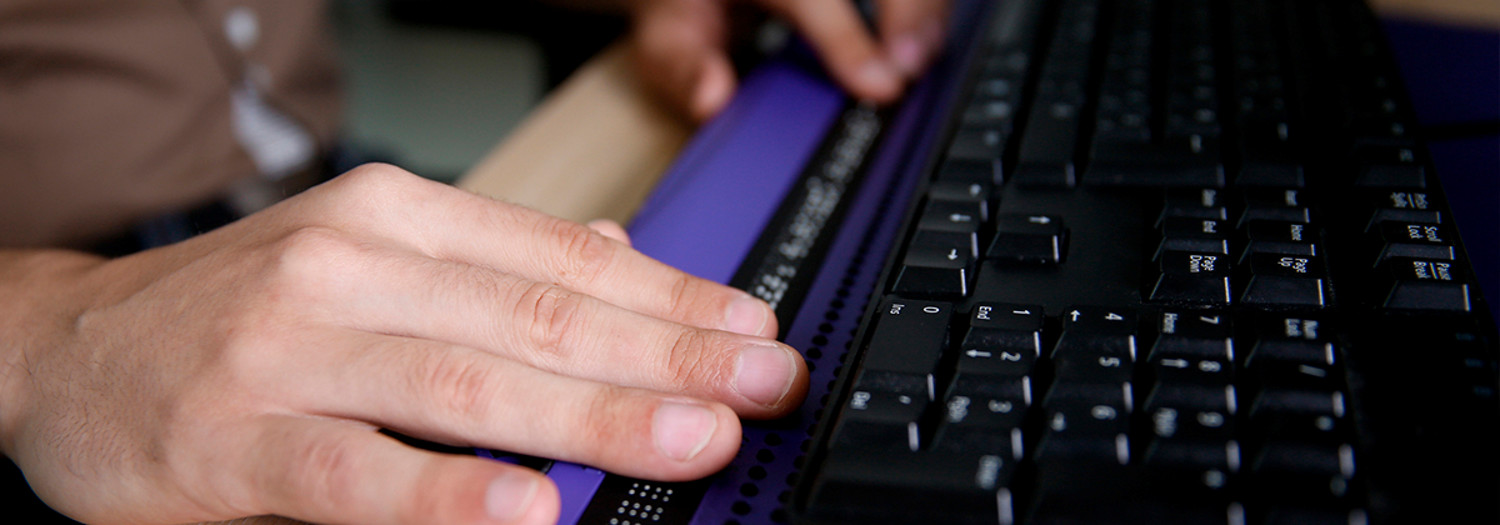- Ethics and Compliance Office
- Technology Accessibility
- Assistive Technologies

Assistive Technologies
When technology is accessible to people using assistive technology, it is more usable to people using a variety of devices in different environments. Pictured above is a refreshable braille display.
Refreshable Braille Displays
A refreshable braille display uses software to convert content on the screen to braille. It displays the braille characters on a device using rounded pins that are raised and lowered to simulate printed braille.
Keyboard Alternatives
Alternative keyboards can have high contrast colors, big key labels, a choice of layouts, or customized keyboard overlays.
Mouse Alternatives
Head and mouth pointers typically consist of a stick with a rubber tip or clamp at one end. The user controls the stick with their mouth or head movement to perform many actions, like typing on a keyboard or navigating web pages.
Eye and head tracking technology measures the user's eye movements or a sensor placed on the forehead (or another location), allowing them to control the computer with the movements of their eyes or head.
Screen Magnifier
Screen magnifiers increase everything on a screen up to 64 times the original size, and also make mouse and text cursors more visible, increase contrast and allow choice of color combinations.
Screen Reader
A screen reader is a text-to-speech system that converts digital text into spoken words. People who are blind or have a visual impairment use screen readers as well as people who benefit from hearing content.
Switch
Switches come in many shapes and sizes. They can be designed to respond to a touch, kick, squeeze or other interaction from the user. Switches controlled with breath use sip-and-puff technology.
Voice Control
Voice recognition technology can control a computer without a keyboard or mouse. Users can perform many functions by speaking commands, including dictating text, navigating to links and activating buttons.